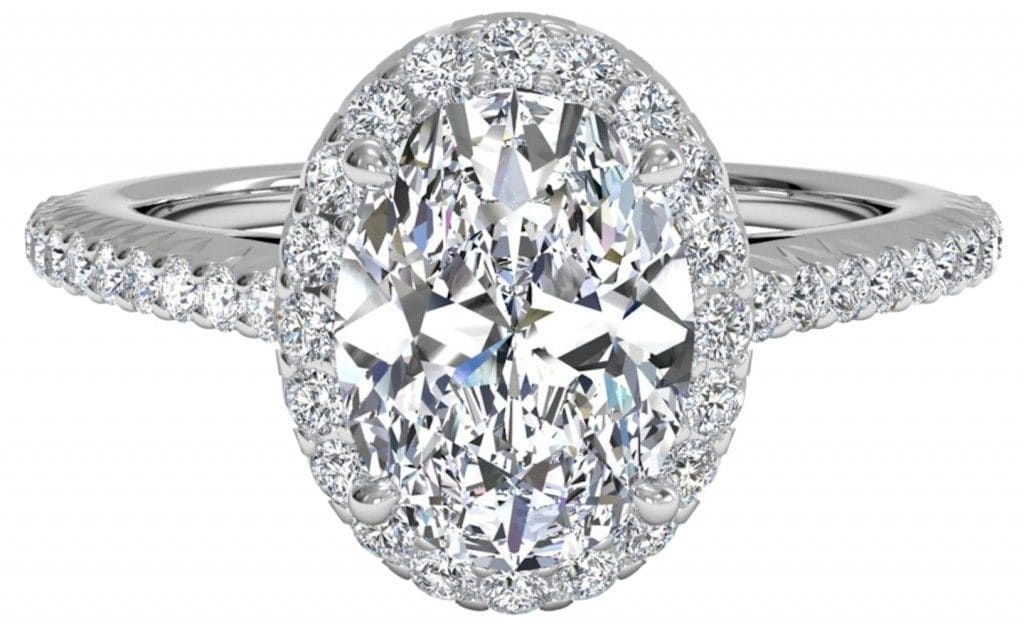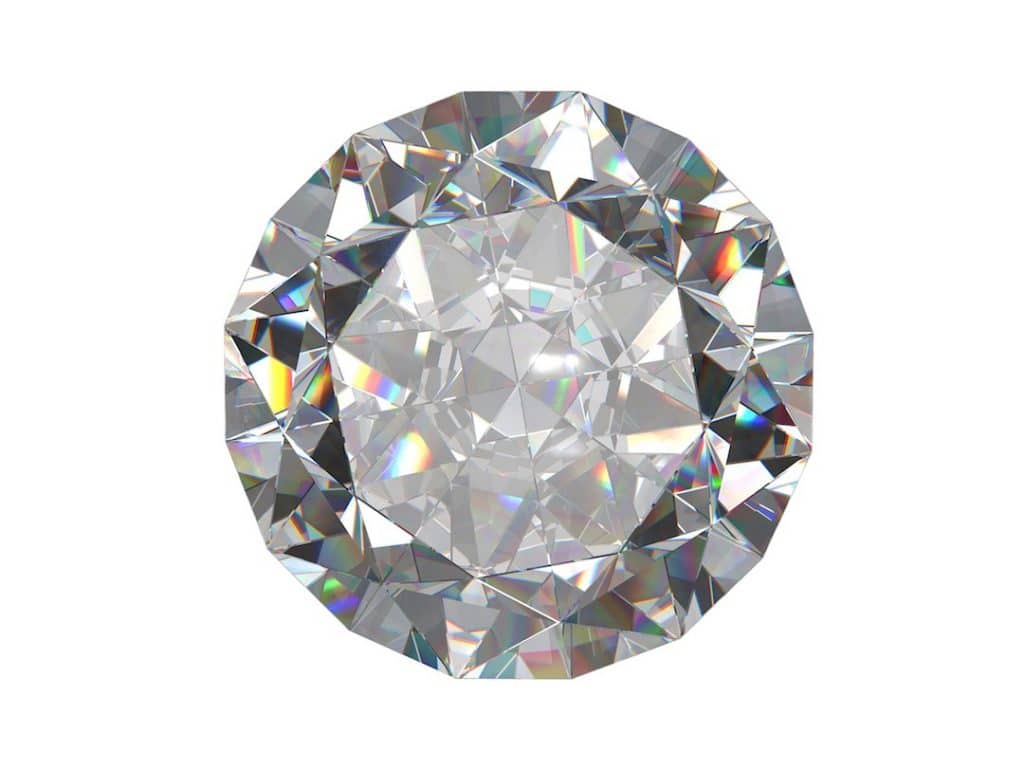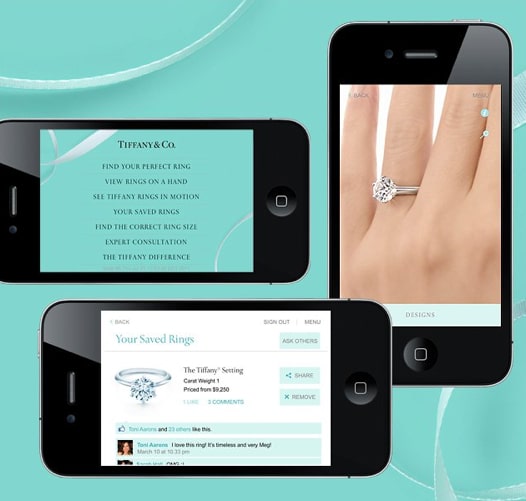Unique, chic and luminous are three words that come to mind when gazing at an oval cut diamond. If you are looking for a diamond that catches the eye, you may discover that a diamond in the oval cut is for you. Its distinctive shape offers a graceful option to the discerning customer who wants to stand out from the crowd.
This cut retains all of the brilliance associated with the more traditional round cut diamond but possesses the added advantage of providing more visual impact. Below you’ll find some tips on what to look for before you shop.
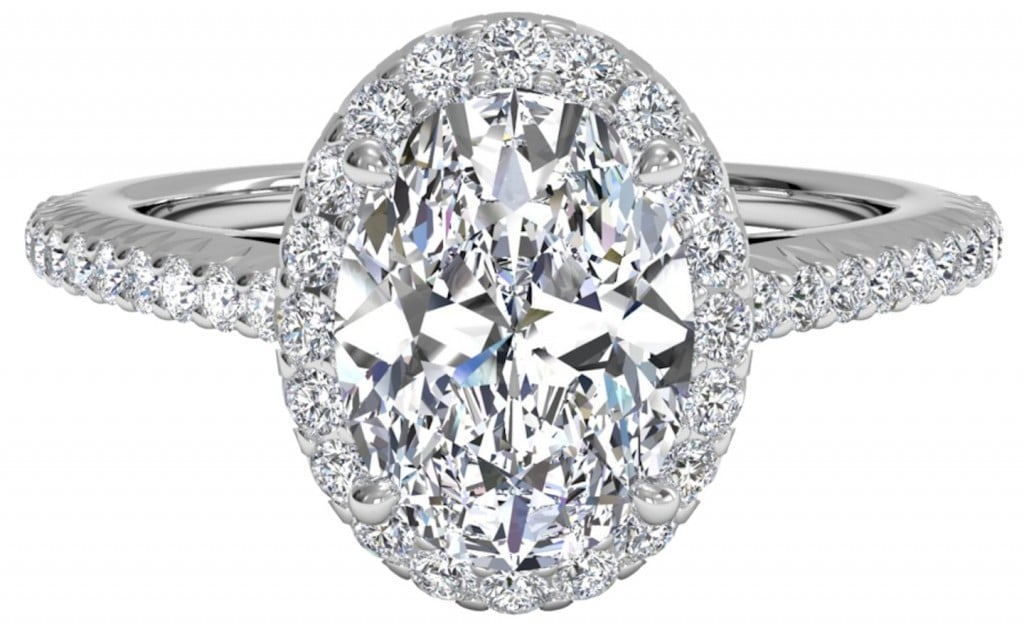
What Is an Oval Cut Diamond?
Somewhere between a round cut diamond and a marquise cut lies the oval cut. The oval cut has 58 facets, the same number as found in a round cut diamond, but has a longer shape with an average length to width ratio of 1.35 to 1.50. Unlike a diamond with a marquise cut, the edges in an oval cut are rounded. Diamonds cut this way are usually produced from irregular roughs and are often cut in a variety of facet designs, so this can often affect the appearance of the stone in terms of quality.
An oval cut has the added benefit of making a diamond appear bigger. This is partly because the cut and facet design provide roughly 10 percent more surface. If you were to place a round cut diamond and an oval cut diamond of equal weight side by side, the oval cut will look larger because of this.
Though not as popular as the round cut, the oval cut is nonetheless gaining ground because it also offers some variations in appearance for the buyer. It can be cut shorter or longer in length. An oval cut that is longer in length nicely accommodates the addition of accent gems to set off the beauty of the diamond. An oval cut diamond can also be extremely flattering to the wearer because it creates the illusion of longer fingers and an elegant, slim hand when used in a ring.
History of the Oval Cut Diamond
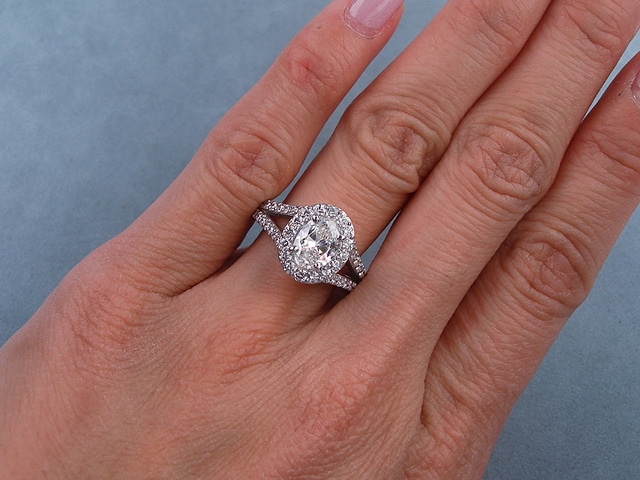
Oval cut gemstones have been around for some time. One of the earliest diamonds cut in this manner was the Koh-i-Noor diamond, a gem that was claimed when the British ruled India and cut into an oval by orders from Prince Albert in the nineteenth century. The Koh-i-Noor diamond was set into the Queen Mother’s Crown and today is in the Tower of London.
Officially, the oval cut as we know it was created in 1957 by a Russian-born diamond cutter named Lazare Kaplan. Kaplan had gained some notoriety for cleaving, a process whereby flawed diamonds could be repurposed by use of a single, skillful blow into a smaller, more valuable stones. He also gained experience by working side by side with his uncle Abraham Tolkowsky, a diamond cutter in his own right who produced his own unique cut – the Ideal, which was fashioned with aid from a mathematical formula developed by his son Marcel. Kaplan’s crafting of the modern oval cut, which his company called “Oval Elegance,” secured him a place in history in the Jewelers Hall of Fame.
Buying Guidelines
Choosing an oval cut versus a round cut is largely a matter of buyer preference. However, as with any purchase, the buyer should be aware of some factors before spending any money.
As with all diamonds, oval cuts are available in a color range that goes from cool to warm. Diamonds in the cool zone (D – F) are rarer and usually available at higher prices. Clarity is determined by the presence of intrusions, flaws in the stone. A jeweler can help you examine a stone for intrusions.
One thing that does set the oval apart from its round counterpart is something called the bowtie effect. This refers to a darkened area that runs from right to left in the center of the diamond that looks like a bow tie. This effect happens as a result of a misalignment that occurred when the diamond was cut. Often this bowtie can only be seen upon close visual inspection with a jeweler’s loop. If it is very small, it can be considered a positive trait with the darkened area providing a nice contrast with the rest of the gem, but if too prominent should rule out the diamond for purchase.
Popular Settings for the Oval Cut Diamond

Prong or bezel settings are often used with an oval cut diamond. Prongs display the gem to advantage but leave it more exposed to loss or damage. Settings are available with four or six prongs. Note that the prong composition is equally important. Platinum prongs are stronger than gold and more resistant to wear and tear.
A bezel setting surrounds the diamond with a metal band. Providing more protection than prongs, it also conceals more of the stone. If safety is a concern, a bezel setting may be the optimal choice. Full or partial settings are available. A full bezel setting completely surrounds the diamond, while a partial only secures parts.
To Sum It All Up
Everyone loves the sparkle and fire of a diamond. An oval cut diamond offers all this in a chic and sophisticated presentation that is sure to appeal to individuals with a strong sense of style. Surprisingly, it is also a more affordable option for those in the market for diamond jewelry. Here we’ve outlined some of the attributes of this out-of-the-ordinary cut for your consideration. We encourage you to discuss them with a reputable jeweler and also invite you to share your experiences in shopping for the perfect oval cut with us.

